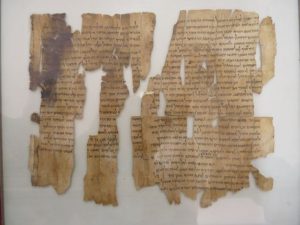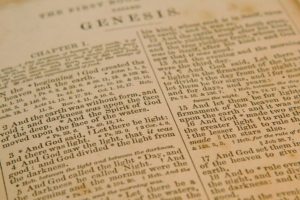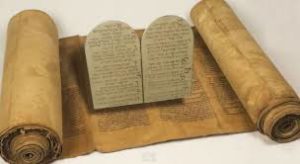Our “case-making” for the reliability, historicity, and authenticity of the 66 books of the Christian Bible continues this week as we uncover evidence using the acronym MAPS-S (Manuscripts, Archeology, Prophecy, Science and Saved lives). We are currently on “M” for manuscripts and we can find historical evidence in abundance for this category. Today we are answering the question: How has the Old Testament been transmitted over time?
Even if you are a skeptic, or you don’t believe the Bible to be the inspired Word of God, you have to admit that it is very intriguing to find an ancient document such as this one surviving thousands of years with minimal damage to its reputation and content. There is no other book of antiquity that has this amazing longevity in popularity, and can boast of having a multitude of early manuscripts (still being discovered) available for study today.
Transmission of the Bible:
The Christian Bible consists of an Old Testament (39 books) and a New Testament (27 books). The Old Testament covers the period of time from creation to about four hundred years before the birth of Jesus. The New Testament covers a very short period of time that begins with the birth of Jesus through the beginning of the Church, all during the first century AD/CE (common era as it is now referred to in academia).
How did we get these books?
It is acknowledged by scholars that the Old Testament we have today is the same one that was being used by Jesus and the Jewish people of the first century AD/CE, at that time considered the sacred Hebrew Scriptures. The New Testament was authored in the first century AD/CE and then canonized by the fourth century AD/CE. We will look at the transmission over time of the Old Testament this week, and the New Testament over the next several weeks.
Let’s start at the beginning:
Old Testament:
How do we know the Old Testament, and the Genesis record in particular, is accurate? Moses wasn’t there to witness the Genesis account, although he is the one that records it along with the other four books of the Torah. We can have confidence in these historical books based on three lines of reasoning with evidence we can follow:
1. God’s own direction and inspiration:
God Himself has guaranteed that what we are reading today is what He meant for us to get. If God exists (and He does) then miracles are possible. If miracles are possible then God can use miracles to communicate His message through the written word throughout time. Jesus also used miracles to communicate God’s message during His time here on earth.
We find in Exodus that God Himself wrote some of what He gave to Moses and also directed what Moses wrote down:
When He had finished speaking with him upon Mount Sinai, He gave Moses the two tablets of the testimony, tablets of stone, written by the finger of God. –Exodus 31:18
When Moses destroyed the tablets after God gave them to him the first time (see story in Exodus) he then went back up the mountain and God re-gave him what we have today.
Now the Lord said to Moses, “Cut out for yourself two stone tablets like the former ones, and I will write on the tablets the words that were on the former tablets which you shattered. So be ready by morning, and come up in the morning to Mount Sinai, and present yourself there to Me on the top of the mountain.” –Exodus 34:1-2
Then the Lord said to Moses, “Write down these words, for in accordance with these words I have made a covenant with you and with Israel.” -Exodus 34:27
Based on God’s direction Moses goes on to record what we have today in the first five books of the Bible known as the Torah. God gave the rest of the Old Testament to Jewish prophets and writers who protected and passed it down over the next one thousand years.
From the New Testament Paul tells us: “All Scripture is inspired by God and profitable for teaching, for reproof, for correction, for training in righteousness; so that the man of God may be adequate, equipped for every good work.” –2 Timothy 3:16-17 (NASB)
And, Peter tells us: “So we have the prophetic word made more sure, to which you do well to pay attention as to a lamp shining in a dark place, until the day dawns and the morning star arises in your hearts. But know this first of all, that no prophecy of Scripture is a matter of one’s own interpretation, for no prophecy was ever made by an act of human will, but men moved by the Holy Spirit spoke from God.” –2 Peter 1:19-21 (NASB)
Watch this short clip on the reliability of the Bible:
2. Oral Transmission:
Oral transmission of information from antiquity was community oriented and therefore self-correcting. In ancient cultures they did not have the technology we have today and information was memorized and past along in groups. It was not like the “telephone game” we think of today where information gets changed by the time it reaches the end of a line of people. If someone passed along false information the people in the community, especially the elders, would easily recognize and correct it.
In ancient culture students of the Scriptures could commit the Torah (the first five books of the Bible) to memory, and some still do it today. Historians consider oral transmission very reliable up through the time of the printing press in the fifteenth century AD/CE. What is notable is that oral transmission from Adam to Moses was only about five generations, and this is a remarkably short transmission line to get to the written Word.
3. Written Transmission:
From Moses’ time on, the written Word was considered sacred. The job of transmission through copying went to the tribe of Levi and the Scribes (along with the continuation of oral transmission). Scribes used materials such as stone, clay, papyrus, parchment, and paper to record the Scriptures.
The Jewish Bible (Tanakh) contains all of the same books that we have in the Old Testament (39), just in a different grouping and order. These books have long been accepted as God’s Word by Jewish Scribes and historians and are categorized as the Torah, the writings, and the prophets. In our Christian Bible we categorized them as the books of Moses, history books, books of wisdom and poetry, and the books of the prophets.
The Septuagint
- The Greek translation and name for the Old Testament
- The Septuagint was the first translation of the Hebrew Scriptures/Old Testament into Greek (ca 300-200 BC/BCE), and this would have been the Scriptures Jesus read from in the first century AD/CE
- It is the translation used by the early Jews and Christian through the second century AD/CE
Massoretic text (ca 900 AD/CE)
- The Masoretes were Jewish scribe-scholars between the 6th and 10th centuries AD/CE, based primarily in present-day Israel in the cities of Tiberias and Jerusalem, as well as in Iraq (Babylonia)
- The Old Testament we have today has been translated mainly from this text family
- It differs from the Septuagint mainly in grammar, spelling, and in some places words and word order
Until the discovery of the Dead Sea Scrolls, some reliability issues were questioned because of the one thousand year gap between the manuscripts. Skeptics would say that the writings were changed over time. However, in 1947 the discovery of the Dead Sea Scrolls (DSS) debunked that thought! Even though minor differences exist, there are no major theological or doctrinal conflicts as the skeptics had hoped.
Watch this short clip by Josh McDowell on the Dead Sea Scrolls:
Dead Sea Scrolls (ca 250 BC/BCE to AD/CE 100)
- These scrolls were discovered in 1947 in the Qumran Caves of the West Bank, about a mile north of the Dead Sea
- The DSS contain all of the Old Testament (with the exception of Esther), and close the one thousand year gap, quieting the skeptics
- This discovery also helped confirm the prophecies in the Old Testament, fulfilled by Jesus, were not added or altered after the time of Christ but in fact was there centuries before his birth
What is so exciting is that we can see many of these ancient scrolls in museums, libraries, and Churches around the world today!
The significance of the Dead Sea Scrolls cannot be denied, especially the confirmation of the book of Isaiah that was written centuries before Jesus birth yet it contains such specific prophecies about Him that skeptics have tried to claim that it was written after the time of Christ. The DSS make this claim impossible. Check out this short video on that topic by Genesis Apologetics:
Scribal Copying Rules:
Skeptics will also claim that since the Scriptures were copied over and over so many times they cannot be accurate. Careful investigation will show, however, that the skeptics are wrong.
Following Moses, the Scribes were required to copy, protect, and preserve their history and the writings through the generations. Copying of the Scripture had extremely rigorous guidelines and there were very harsh warnings for disobedience—see Deuteronomy 28:56-69. There were over 4000 very strict rules for the treatment of Scripture that could only be performed by Scribes. Here are just a few examples:
- Each scroll must contain a specific number of columns, all equal throughout the entire book
- Each column’s length must not be less than 48 lines or more than 60
- Each column’s breadth must be exactly 30 letters
- The copyist must use a specially prepared black ink
- The space between every consonant must be the size of a thread
- The copyist must sit in full Jewish dress
- The copyist must use a fresh quill to pen the sacred name of God
- The copyist could copy only letter by letter not word by word
- The copyist counted the number of times each letter of the alphabet occurred in each book
- The copyist knew the middle letter of the Pentateuch and of the entire Old Testament
- After copying the copyist counted forward and backward from the middle letter
- The copyist must count all letters and spaces
- The copyist must not be interrupted, even if the King walked in, they could not stop
- Each manuscript would be compared and read out-loud before the people
- Any mistake in any area would require the copyist to burn the copy, or tear it up, and start over
The scribes believed with all their hearts, souls, and minds that this was the Word of God. They were responsible for it and had a reverent fear for what they were doing. Scribes taught and lived by the highest ethical standards and were willing to die for their job.
Watch this short clip on the job of the Scribes:
Moses wrote these words to the Israelites:
These are the commands, decrees and laws the Lord your God directed me to teach you to observe in the land that you are crossing the Jordan to possess, so that you, your children and their children after them may fear the Lord your God as long as you live by keeping all his decrees and commands that I give you, and so that you may enjoy long life. Hear, Israel, and be careful to obey so that it may go well with you and that you may increase greatly in a land flowing with milk and honey, just as the Lord, the God of your ancestors, promised you. Hear, O Israel: The Lord our God, the Lord is one. Love the Lord your God with all your heart and with all your soul and with all your strength. These commandments that I give you today are to be on your hearts. Impress them on your children. Talk about them when you sit at home and when you walk along the road, when you lie down and when you get up. Tie them as symbols on your hands and bind them on your foreheads. Write them on the door frames of your houses and on your gates. Deuteronomy 6:1-9
Going Deeper:
Josh McDowell and his son Sean McDowell have recently updated the book: Evidence that Demands a Verdict: Life-Changing Truth for a Skeptical World. This is a must own book for any serious Christian’s library. You can also search for Josh and Sean on YouTube. They have excellent video teachings on the Bible’s historicity, reliability, and authenticity.
Dr. Steven Collins is an expert in the field of Archeology. He is currently heading a project that is uncovering the location of the ancient cities of the plain, including Sodom and Gomorrah, using only the Bible for directional location.
Watch Dr. Steven Collins give evidence for the reliability of the Old Testament from Archeology:
Doug Powell, Christian Apologist, does an excellent visual presentation called: Where Did the Old Testament Come From?
Reflection:
- What evidence might you use in a discussion with a friend about the authenticity and reliability of the Old Testament?
- What questions do you still have about the authenticity and reliability of the Old Testament?
- Write out a prayer to God asking Him to lead you to experts who will help you gain the confidence to trust that the Bible is the reliable and accurate Word of God. Ask for the Holy Spirit to teach you and help you as you study.
Join us next week as we investigate the transmission of the New Testament!
————————————————————————————————————————————————————
You will not find this material in the public school curriculum even though it is based on solid evidence and grounded in research. It is ironic that following the evidence to where it leads stops at the door of our public schools as they will not let a “Divine footprint” in! Join us as we examine evidence for Christianity and learn how to become a thoughtful defender and ambassador of your faith.
Click into the resource page of this website to view many of the top Christian thinkers and apologists along with some of their work; connecting to these types of resources is essential in your Christian growth.
Please let me know what you think: Give feedback, ask questions or send concerns in the comment section of the blog.
Teri Dugan
TeriDugan@truthfaithandreason.com
1 Peter 3:15




Sorry, comments are closed for this post.